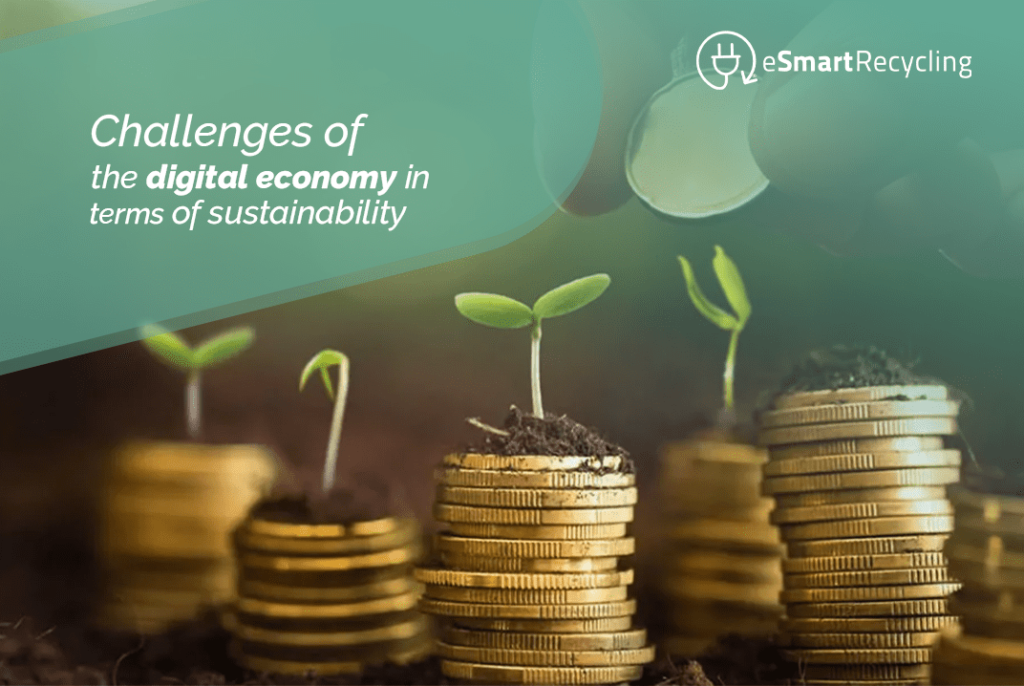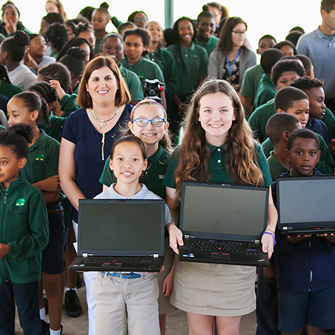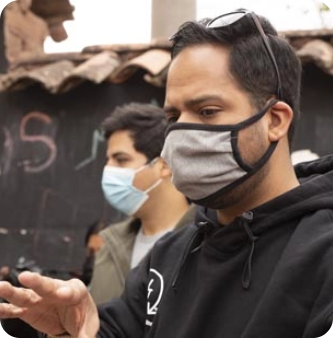
The digital economy has opened up a range of new opportunities and challenges for businesses worldwide. One of the most pressing issues facing businesses is sustainability. From reducing carbon emissions to using renewable resources and increasing transparency in supply chains, the digital economy is forcing businesses to rethink their business models. However, there are several challenges organizations face in terms of sustainability in the digital economy. This article outlines some of the main challenges and explores ways to address them.
The digital economy has become increasingly important for businesses in recent years. It refers to the set of economic activities performed using digital technology. This includes everything from online shopping to mobile banking, and even a new generation of “smart” products, such as smart speakers and home assistants. By employing digital technology in this way, businesses can make countless processes more efficient, reducing costs and improving production.
However, this increased dependence on digital technology also entails many environmental, social, and economic impacts. For example, the production of digital technology often involves the use of toxic chemicals and large amounts of water, and electronic waste is a significant problem. In addition, energy consumption and unsustainable sourcing practices can also pose problems for businesses. As a result, sustainability has become a key concern for both businesses and consumers. Organizations are increasingly accountable for their environmental and social impacts, and there is a growing demand for more sustainable products and services.
There are several key challenges that organizations face when integrating sustainability into the digital economy. For example, one of the main problems is the lack of clear guidance for businesses on how to best address sustainability. This can make it difficult for organizations to know where to start or how to prioritize areas in which they want to make improvements.
Another challenge is that many digital technologies require large amounts of energy, which can lead to significant carbon emissions. For example, data centers are a major source of emissions, and their number is only increasing as the digital economy expands. Many companies do not have the resources to invest in renewable energy sources, making it difficult to reduce their carbon footprint.
Data security and privacy is also an issue. Many organizations are collecting large amounts of data from their customers to inform their decision-making processes. However, these data pose many privacy and security issues. Customers are increasingly concerned about how their data is collected and used, and organizations must implement robust data security measures to protect them and ensure compliance with relevant laws and regulations.
There are various strategies that companies can adopt to address the challenges of sustainability in the digital economy. First, organizations need to establish a clear strategy and define their sustainability goals. This will help ensure that all members of the organization work towards a common goal and that the necessary resources are allocated to make the required improvements.
Organizations should also strive to be as transparent as possible with their customers and other stakeholders. This can help build trust and allow the organization to be accountable for its environmental and social impacts. This could involve reporting on the organization’s environmental performance or even allowing customers to track the journey of their products through the supply chain.
Investing in renewable energies and energy efficiency measures can also help organizations reduce their carbon impact. This could involve using renewable energies or applying energy-saving technologies, such as LED lighting. In addition, organizations should strive to reduce the amount of waste they produce and also encourage their suppliers to adopt more sustainable practices.
Finally, organizations should try to make the most of digital technology. There are several programs and tools available that can help organizations make their processes more efficient and reduce their environmental impact. For example, enterprise resource planning (ERP) systems can help improve supply chain transparency, while smart sensors and monitoring software can help identify areas to improve energy and resource consumption.
The digital economy has created new opportunities for organizations, but also some new challenges in terms of sustainability. However, by establishing a strategy and clear objectives, being transparent with their customers and other stakeholders, investing in renewable energies and energy efficiency measures, and making the most of digital technology, organizations can ensure that they effectively manage their environmental and social impacts. As a result, companies can continue to profit in the digital economy while at the same time contributing positively to the environment and society.
Fill out the form below to request your electronics recycling pickup.
We’ll coordinate the schedule logistics and follow up with next steps.
Every year, many laptops are no longer used by companies across Tampa. Some are stored “just in case,” others are replaced due to internal policy changes, and some simply leave the operational cycle. What we saw this year is that, when those laptops are handled responsibly and through the right partnerships, they can serve a very concrete purpose for students who truly need them.
That’s what happened throughout 2025 thanks to the joint work between eSmart Recycling, Digital Education Foundation, and the Sheriff’s Hispanic Advisory Council (SHAC). Laptops that no longer had a place in an office became everyday tools for students to study, stay connected with their schools, and continue learning with fewer worries.
In many organizations, device replacement is routine. Systems change, processes are updated, and laptops are retired before reaching the end of their usable life. The challenge appears when those devices sit unused or are discarded without proper handling.
At that point, more than reusable material is lost. There’s also a missed chance for those devices to remain useful for students who don’t have access to a personal computer at home. In daily school life, that absence is felt more often than it seems.
The U.S. Environmental Protection Agency explains that responsible electronics recycling enables the recovery of valuable materials while reducing environmental and data security risks when proper standards are followed.
In practical terms, this means a well-managed laptop can re-enter circulation and serve a clear purpose where it’s needed most.
Throughout 2025, we took part in three laptop deployments at public schools in Hillsborough County: Wimauma Elementary School, Davidsen Middle School, and Spoto High School.
In total, 214 laptops were delivered, directly benefiting 856 people, including students and their families.
These deployments were possible thanks to a collaborative model. The Sheriff’s Hispanic Advisory Council (SHAC) played a key role through community investment and coordination, while eSmart Recycling enabled access through its circular model, recovering laptops via responsible electronics recycling. Digital Education Foundation supported the social and community side of the effort, helping ensure each device reached the students who needed it most.
Rather than a one-time action, this work relied on close coordination with school staff, members of the Sheriff’s Hispanic Advisory Council, HCSO deputies, and our technical teams. That preparation showed in every deployment, in how smoothly the process ran, and in the calm shared by everyone involved.
The participating schools serve a high number of Hispanic students. In many households, having a personal computer remains difficult. This reality shows up in postponed assignments, limited access to school platforms, and added pressure on families and educators.
Data from the National Center for Education Statistics shows that access to devices continues to vary significantly based on socioeconomic factors, even in districts with strong infrastructure.
Addressing this gap requires coordination, funding, reliable technical processes, and partnerships that work well on the ground. During these deployments, we saw how collaboration between schools, SHAC, Digital Education Foundation, and eSmart Recycling helped laptops reach the students who needed them, without unnecessary friction.
At eSmart Recycling, we operate under the R2v3 standard, one of the most demanding certifications in the U.S. electronics recycling sector. This standard defines how data is handled, how equipment is processed, and how materials are managed throughout the entire lifecycle.
For companies, this provides peace of mind. Their data is handled securely, and their devices are processed through audited practices. For educational communities, it means the laptops delivered are suitable for academic use.
The laptops delivered meet very practical needs. They allow students to access learning platforms, take part in virtual classes, build digital skills, and communicate more easily with teachers and schools.
During the deployments, we saw how having a personal device eased everyday stress and allowed attention to return to what matters most: learning, keeping up, and staying connected.
No formal quotes were collected, but the atmosphere was consistent across all three events. Students showed excitement, teachers felt more at ease, and school teams were fully engaged.
That kind of energy appears when everyone understands their role and follows through on what was agreed. It shows in small details and in how people interact throughout the process.
For many companies, laptop recycling is simply another operational task. Our experience shows that, when done responsibly, it can also become a meaningful way to support the local community.
By recycling their technology with us, companies meet recognized standards, reduce data-related risks, and support local education initiatives in a verifiable way.
This isn’t just about removing old devices from inventory. It’s about allowing those devices to remain useful where they are needed most.
This year reinforced how much early coordination matters. Setting reminders at 90, 60, and 30 days for all parties involved helps keep information aligned, especially when school staff or academic calendars change.
The message for companies is simple: by recycling technology responsibly, they can help students access the tools they need and strengthen educational communities, without compromising security or compliance.
Reducing tech waste in IT projects is just as important as keeping your infrastructure running smoothly. If you manage sustainability or IT for a company in the U.S., this article breaks down three practical ways to minimize electronic waste (e-waste) — and how we, at eSmart Recycling, can help you do it safely, responsibly, and profitably.
Every year, millions of tons of electronic devices reach the end of their life. According to the Global E-waste Monitor 2024, 53.6 million tons of e-waste were generated in 2022, and only about 20% was properly collected and recycled.
For organizations managing large IT infrastructures — servers, workstations, peripherals, and networking gear — that means:
Start with a clear inventory of all your IT assets — their condition, age, and actual usage. This lets you decide when to repair instead of discard, reassign devices to less demanding roles, or plan gradual replacements instead of mass hardware turnovers.
Many companies now use leasing or “hardware-as-a-service” models that make upgrades more predictable without generating huge waves of waste. Extending device lifespan reduces e-waste and helps you stabilize your IT budget at the same time.
When equipment leaves your main operation, it doesn’t have to go straight to a landfill. That’s where we come in. At eSmart Recycling, we collect, audit, and securely destroy data following strict standards like HIPAA. Then we refurbish, value, and donate part of the recovered technology — roughly 30% of our revenue goes toward restoring devices for underserved communities.
This turns what could have been waste into social value. For your company, it means a measurable reduction of e-waste and a tangible expression of corporate responsibility. Reuse and donation also send a strong signal to employees, clients, and regulators: your IT asset management doesn’t end when devices are decommissioned — it continues through their second life.
When devices truly reach the end of their usable life, proper handling is essential — secure data destruction, certified recycling, and material recovery. The Global E-waste Monitor estimates that only around 20% of global e-waste is officially tracked and recycled. In the U.S., the Environmental Protection Agency (EPA) reminds that electronics contain hazardous materials and should never end up in untreated landfills.
Working with eSmart Recycling gives your company certificates of data destruction, environmental and social reports, and full traceability for every asset — helping you stay compliant, transparent, and credible in sustainability reporting.
By applying these three strategies, your organization not only reduces electronic waste but also builds a stronger reputation, meets sustainability goals, and frees up IT resources for what truly matters.
Turning corporate social responsibility (CSR) into measurable action means going beyond good intentions. It’s about doing, tracking, and communicating. Here’s how companies in the U.S. can take tangible steps—and how we at eSmart Recycling do it every day.
Start by translating your company’s values into specific, actionable goals. For example: “Reduce electronic waste by 10% this year” or “Donate 500 refurbished devices to underserved communities.” Then assign metrics to track progress—devices collected, percentage reused, tons of e-waste diverted, etc.
Why it matters: 90% of S&P 500 companies now publish ESG reports, and 76% of consumers would stop buying from a brand that doesn’t protect social or environmental well-being.
At eSmart Recycling, we allocate about 30% of our revenue to repair and donate computers—this is one of our measurable KPIs, not just a statement of intent.
Once goals and metrics are set, it’s time to act. This can include audits, collection drives, NGO partnerships, or employee engagement programs. The key is to document every step so you can later report credible data.
For instance, a tech company can collect outdated routers and laptops, securely destroy data (as HIPAA requires in some cases), and donate the working devices. That’s exactly what we do at eSmart Recycling: we collect, audit, value, and repurpose technology so it keeps serving people instead of ending up as waste.
Documenting this process allows you to report outcomes such as: “We collected X tons of equipment,” “Reused Y %,” or “Donated Z devices to N families.” With real numbers, CSR becomes a visible action.
About 73% of investors now consider CSR practices in their decisions. Showing execution and documentation builds trust among employees, customers, and investors alike.
Finally, transparency turns action into credibility. Share what you’ve done, report your data, and review your progress regularly. Reports, certificates, and environmental or social summaries build trust and strengthen partnerships.
At eSmart Recycling, we share “certificates of secure data destruction” and detailed “donation reports” with our partners. This evidence shows accountability.
Revisiting your metrics often also helps: if your quarterly numbers fall short, adjust the plan—collect more, improve logistics, or engage more employees. Continuous measurement keeps your CSR program alive and credible.
Reporting is no longer optional: social and environmental disclosures are becoming standard business practice. Companies that show how they act—not just what they believe—stand out from those still talking about responsibility in theory.
Each of these steps—setting measurable goals, executing and documenting, communicating and improving—turns CSR from words into measurable results. If your company is ready to take that leap, we at eSmart Recycling can help with technology collection, data auditing, valuation, and device donation programs that make your social commitment measurable.
When a company decides to recycle its technology, it wants to do it right — safely, smoothly, and with clear results. But not every recycling program works the same way.
At eSmart Recycling, we know it’s not just about picking up old equipment. It’s about giving technology a new purpose and doing it responsibly.
Every pickup starts with a full audit. We inventory, classify, and guarantee secure data destruction, meeting standards such as HIPAA and other privacy regulations.
Nothing is left to chance — every device goes through a documented process, backed by certificates of destruction and complete traceability. It’s the most transparent way to protect your information while reducing environmental impact.
A lot of the equipment we collect still has life left in it. That’s why we allocate around 30% of our revenue to repairing and refurbishing computers, laptops, and other devices before donating them.
Each refurbished device becomes a tool for a school, a family, or a community that needs it. That’s what drives us — reducing waste, connecting people, and extending the life of technology.
From the first pickup to the final donation, every step is recorded. Our partners receive environmental and social reports, data destruction certificates, and impact summaries they can include in sustainability or CSR reports. If your company upgrades its laptops, for example, we’ll show you how many were securely destroyed, how many were refurbished, and who benefited from them. Everything is clear, measurable, and verifiable.
We’re based in Tampa, Florida (5100 Vivian Place, Tampa, FL 33619). We serve businesses across the U.S., but we keep our communication personal. We coordinate collections without bureaucracy, keep you updated throughout the process, and make sure everything runs smoothly. We’re not a distant vendor — we’re part of the same commitment to doing things right.
Our program is a good fit if your company:
If your company wants to recycle its technology safely and with purpose, get in touch with us here. We can schedule a pickup, review your equipment, and help you make sure it continues its life in the right way. Because when technology is reused responsibly, everyone benefits.
Electronic waste —or e-waste— is piling up at an alarming rate, with consequences comparable (and in some ways worse) than those of plastic. For companies in the U.S. committed to sustainability, understanding this issue is no longer optional: it has operational, legal, and reputational implications.
In 2022, the world generated around 62 million tons of electronic waste, a figure projected to reach 82 million by 2030.
Only about 22 % of that amount was formally collected and recycled.
Just like plastic decades ago, e-waste often ends up hidden in storage rooms or landfills, quietly building up. Ignoring it might seem harmless —until it isn’t.
E-waste follows the same pattern as plastic did: short product lifespans, multiple devices per person, and products that are hard to repair.
Companies constantly upgrade equipment, but very few plan for what happens after.
Electronics contain heavy metals like lead, mercury, and cadmium, along with brominated flame retardants. When dumped or processed informally, these elements contaminate soil, air, and water.
Like plastic, e-waste doesn’t just disappear —it lingers.
Inside those discarded devices lie valuable materials: gold, silver, copper, and rare earth elements. Every ton of e-waste left unprocessed means losing resources that could feed back into supply chains.
Treating e-waste as “the new plastic” means recognizing that what looks like trash may still hold significant value.
If your organization upgrades laptops, desktops, printers, routers, or cables, how you manage the old ones should be part of your sustainability plan.
With us at eSmart Recycling, we handle secure data destruction compliant with HIPAA, provide detailed inventory audits, and reinvest around 30 % of proceeds into repairing and donating devices to underserved communities.
Improper e-waste management can also create legal risks —while there’s no single federal law, most U.S. states have regulations covering electronics disposal.
Done right, it’s more than compliance: it builds credibility and trust with customers and partners.
Because e-waste has become what plastic was decades ago: cheap, convenient, and everywhere. It’s piling up fast, and only a small fraction gets recycled. The difference is that this time, we can act before it’s too late.
At eSmart Recycling, we believe in giving technology a second life —protecting the environment while connecting people who need access the most.
New regulations are coming, and if your business handles tech equipment, you’ll want to be ready. At eSmart Recycling, we collect and recycle corporate technology responsibly—helping companies meet compliance without stress.
The U.S. still doesn’t have one single federal law for electronic waste. Instead, more states are passing Extended Producer Responsibility (EPR) laws, which require companies to manage the full life cycle of their products.
The EPA is also developing a national EPR framework for batteries, signaling tighter oversight of tech and electronic waste by 2026.
In short, if your business owns, sells, or disposes of IT equipment, you’ll need to:
Different states, different rules.
If your company operates across several locations, map out where e-waste and packaging EPR laws are already active.
Also, check which devices contain sensitive data—because disposal without secure erasure can violate privacy laws such as HIPAA.
That means:
That’s what we do at eSmart Recycling. We handle every stage—from pickup to final reporting—so your compliance paperwork is covered, and your data stays protected.
Saying “we recycle” isn’t enough anymore. Regulators and clients want evidence.
Include your e-waste and recycling stats in ESG or sustainability reports.
Work only with certified tech recyclers (like us).
And document your data destruction and donation processes to show that devices truly reached a responsible end.
Many state EPR laws will start requiring producer registration and reporting by 2026.
Being compliant early doesn’t just protect you—it gives you a competitive edge. You’ll be able to say: we’re already ready for 2026.
At eSmart Recycling, we collect and recycle corporate tech, audit every device, securely erase data, and donate refurbished equipment to communities that need it most.
Preparing for 2026 starts with doing things right today.







If you want to know more about the different programs, partners, and overall cool things happening in the eSmart world, share your email with us, and Join the E-Revolution.